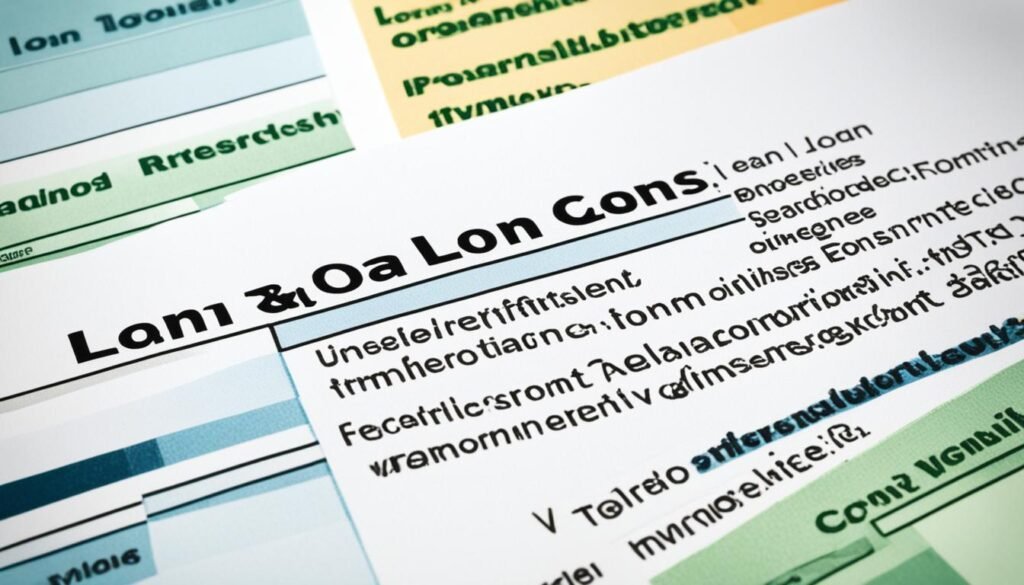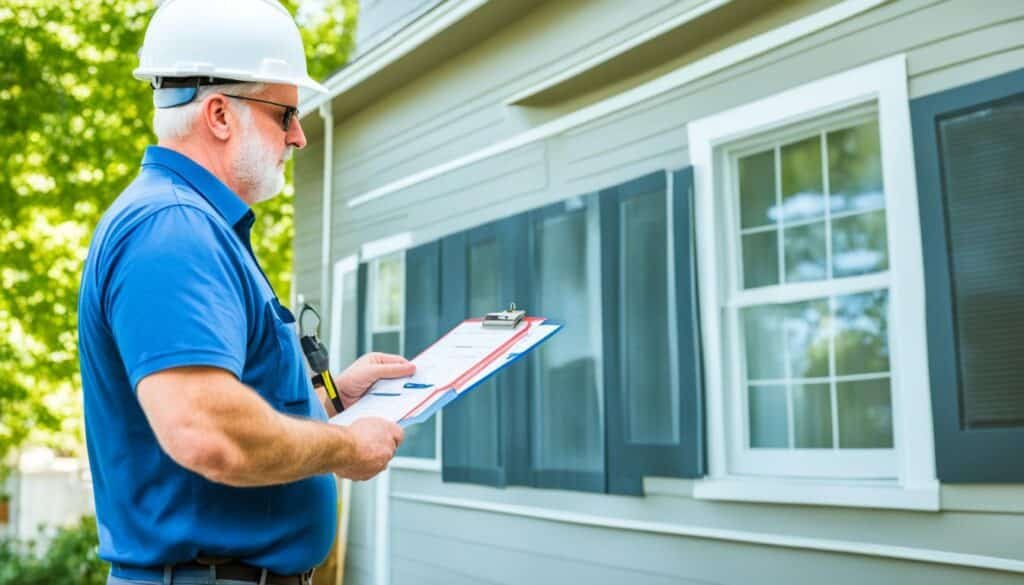Mortgage Loan Refinance : Refinancing your mortgage can be a smart financial move. It lets you lower your interest rate, reduce monthly payments, or use your home’s equity. If you want to save money or get cash for something, the refinance process might seem hard. This guide will help you understand and complete the mortgage refinance step by step, from the basics to closing your new loan.
Key Takeaways
- Refinancing your mortgage can help you lower your interest rate, reduce monthly payments, or access your home’s equity.
- The refinance process involves applying with lenders, going through underwriting, and closing on the new loan.
- Decide on the type of refinance (rate and term or cash-out) and shop around to compare lender offers.
- Prepare by checking your credit, gathering documentation, and locking in your interest rate.
- Understand the costs and fees associated with refinancing, such as closing costs and prepayment penalties.
What is a Mortgage Refinance?
Mortgage refinancing means getting a new loan to replace your old one. This can help you get a lower interest rate, change your loan term, or use your home’s equity. By refinancing, you can adjust your home loan to fit your current financial situation or market changes.
Understanding the Refinancing Process
The refinance process usually takes 30 to 45 days. It includes several important steps:
- Deciding on the type of refinance loan (e.g., rate-and-term or cash-out refinance)
- Applying with multiple lenders to compare rates and fees
- Locking in your interest rate
- Undergoing a home appraisal and credit check
- Closing on the new mortgage loan
Benefits of Refinancing Your Home Loan
Refinancing your mortgage can offer many benefits, such as:
- Lowering your monthly payment with a lower interest rate
- Changing your loan term to fit your financial goals
- Using home equity through a cash-out refinance
- Switching from an adjustable-rate to a fixed-rate mortgage
Knowing about the refinancing process and its benefits helps homeowners decide if refinancing is right for them.
Reasons to Refinance Your Mortgage

Refinancing your mortgage can bring many benefits, like lowering your monthly payments or changing your loan term. It’s important to know the main reasons to refinance to see if it’s a good financial step for you.
Lower Your Monthly Payments
One big reason to refinance is to get a lower interest rate. This can greatly reduce your monthly mortgage payments. By switching to a loan with a lower rate, you could save a lot of money over time. This can make owning a home more affordable.
Shorten or Extend Your Loan Term
Refinancing lets you change your loan’s length. If your finances have gotten better, you might refinance for a 15-year mortgage to pay off your home quicker and save on interest. Or, if you need smaller monthly payments, you could choose a 30-year loan but pay more interest overall.
“Refinancing can be a powerful tool to optimize your mortgage and achieve your financial goals, whether that’s lowering your monthly payments or paying off your home sooner.”
There are many reasons to refinance your mortgage, depending on your financial situation. Think about how it will affect your interest rate, loan term, and monthly payments. This will help you decide if refinancing is the best choice for you.
mortgage loan refinance

When thinking about refinancing your mortgage, you have two main choices: a rate-and-term refinance or a cash-out refinance. It’s important to know the differences between these options to pick the best one for your financial goals.
Rate and Term Refinance
A rate-and-term refinance aims to get a lower interest rate and maybe a shorter loan term. This refinance lets you swap your old mortgage for a new one with better terms. This could lower your monthly mortgage payments.
Cash-Out Refinance
A cash-out refinance lets you tap into the equity in your home. You borrow more than what you owe on your current mortgage and get the extra cash. This cash-out can be used for home improvements, paying off debt, or other financial needs.
| Feature | Rate and Term Refinance | Cash-Out Refinance |
|---|---|---|
| Loan Type | Conventional, FHA, VA, or USDA | Conventional, FHA, VA, or USDA |
| Loan Program | Refinance | Cash-out refinance |
| Loan Term | Same or shorter term | Same or longer term |
| Purpose | Lower interest rate, shorten term | Access home equity for cash |
When choosing between a rate-and-term refinance and a cash-out refinance, think about what you need financially. The best option depends on your current loan type, loan program, and what you want for your loan term.
Prepare for the Refinance Process

Before you start your mortgage refinance, make sure your finances are ready. Get your finances in order and collect all the needed documents. This makes the application process easier and can lead to better loan terms.
Check Your Credit Score and Credit Reports
First, check your credit score and credit reports. Lenders look at your credit score to see if you’re eligible and what interest rate you’ll get. Look at your reports from Experian, Equifax, and TransUnion for any mistakes. Fix any errors to improve your score before applying for a refinance.
Gather Required Documentation
Collecting the right documents is key for your refinance application. Lenders want to see things like:
- Recent pay stubs or proof of income
- Tax returns from the past two to three years
- Bank statements and investment account statements
- Homeowner’s insurance documents
- Proof of your current mortgage balance and payment history
Having these documents ready makes the underwriting process smoother. This ensures a quick and easy refinance.
“Preparation is the key to a successful refinance. Take the time to review your credit and gather the necessary documents to ensure a seamless process.”
Step 1: Decide on the Loan Type and Term

When refinancing your mortgage, picking the right loan type and term is key. This choice affects your financial goals. It’s vital to think about your options carefully.
You can choose between a fixed-rate mortgage or an adjustable-rate mortgage (ARM). A fixed-rate mortgage keeps your interest rate the same, making your payments predictable. An ARM starts with a lower rate but can change over time.
Then, decide on the loan term, which is usually 30-year or 15-year. A 30-year loan means lower payments but more interest over time. A 15-year loan has higher payments but pays off faster and saves on interest.
If you have an FHA, VA, or USDA loan, consider a Streamline Refinance. These options are quicker and might have lower costs.
Think about your finances, goals, and current loan to pick the best option. This choice affects your payments, interest, and how fast you’ll pay off your loan.
Step 2: Shop and Compare Lenders

Refinancing your mortgage is a big financial move. It’s important to look at all your options carefully. Start by comparing offers from different lenders. This way, you can find the best terms for your refinance.
Get Multiple Loan Estimates
Begin by getting preapproved and applying for a loan with several lenders. This will give you personalized loan estimates. These estimates will show the fees, charges, and monthly payments for each loan. By comparing these, you can see which option is most cost-effective.
Negotiate Rates and Fees
With the loan estimates in hand, you can try to negotiate better rates and fees with lenders. Look over each offer carefully. Then, ask lenders to match or beat their competitors’ deals. This can help you get the best refinance deal.
Shopping around and comparing lenders is key in refinancing. By exploring your options and negotiating, you can make sure you’re getting good value for your money.
Step 3: Lock in Your Interest Rate

After picking a lender and loan that fits your needs, it’s time to lock in your interest rate. This step keeps you safe from rising rates before your loan is finalized. It gives you peace of mind and keeps your finances stable. The rate lock duration varies from 15 to 60 days, based on your lender and loan type.
If your loan doesn’t close before the rate lock period ends, you might be able to extend it. But, this could cost you extra. Some lenders let you “float down” your rate. This means you lock in a rate, but you can get an even lower lock interest rate if rates drop during the lock period.
| Loan Type | Typical Rate Lock Duration | Float Down Option |
|---|---|---|
| Conventional Loan | 30-60 days | Yes |
| FHA Loan | 15-60 days | Yes |
| VA Loan | 30-60 days | Yes |
Locking in your interest rate is key in refinancing. It shields you from market changes and keeps your finances stable. Make sure you know the details of your rate lock and look into float down options for you.
Step 4: The Underwriting Process

After you’ve applied and locked in your interest rate, your lender starts the underwriting process. This important step checks your financial info and credit history to see if you’re creditworthy. A big part of this is the home appraisal, where an expert looks at your property’s value.
For FHA, VA, or USDA loans, or if your home was recently appraised, you might not need an appraisal. This can make the underwriting faster and save you money. But usually, the appraisal is key. It makes sure the lender gives you the right loan amount based on your home’s value.
The underwriting stage is key. It checks all the info you gave to make sure it’s right before approving your loan. By looking at your finances and your home’s value, the lender can make a smart choice. They’ll give you the best refinancing terms they can.
“The underwriting process is designed to protect both the lender and the borrower, ensuring a fair and transparent refinancing experience.”
Step 5: Close on Your New Loan

As you get close to finishing your mortgage refinance, the closing process is the last step. This is when you sign all the paperwork and finalize your new loan. Your lender will give you a detailed Closing Disclosure a few days before closing. It will show the final loan terms and costs.
On the closing day, you’ll look over and sign important legal papers. These papers transfer your home’s ownership and secure your new mortgage. If you’re doing a cash-out refinance, you’ll get the cash then. You’ll also pay any closing costs not covered by your loan.
The closing marks the end of your old loan and the start of your new one. Knowing what happens in this final step helps make the switch to your new mortgage smooth and successful.
| What to Expect at Closing | Key Considerations |
|---|---|
|
|
“The closing process is the final step in refinancing your home loan, where you officially transition to your new mortgage terms.”
Refinancing Costs and Fees
Refinancing your mortgage comes with costs and fees you should know about. It’s key to understand these costs for a smooth refinance process.
Closing Costs and Lender Fees
Refinancing usually means paying closing costs, which can be 2% to 6% of your property’s value. These costs include things like appraisal fees and origination fees. Lenders also have their own fees, like application fees.
Prepayment Penalties
Check if your current mortgage has prepayment penalties. These can increase the cost of refinancing. Some lenders offer a “no-cost refinance” where the closing costs are added to the new loan. This lets you refinance without paying upfront costs.
Knowing about refinancing costs, closing costs, lender fees, and prepayment penalties helps you decide if refinancing fits your financial goals.
When is the Best Time to Refinance?
Figuring out the best time to refinance your mortgage is a key move that can greatly affect your finances. You should look at several things like market conditions, interest rates, and your financial situation and refinance goals.
Market Conditions and Interest Rates
Looking at interest rates is crucial when thinking about refinancing. If rates have gone down since you got your original mortgage, now might be a good time to refinance. You could get a lower rate and pay less each month. But, if rates have gone up, refinancing might not save you much money.
Your Financial Situation and Goals
Your financial situation and refinance goals matter too. If you’ve built up a lot of equity in your home or your credit score is better, you might get better loan terms. This could let you pay off your loan faster or get cash through a cash-out refinance. Think about how refinancing fits into your financial plans and if it meets your long-term goals.
“The decision to refinance should be based on a thorough analysis of your current financial situation and future goals, not just the prevailing interest rates.”
The best time to refinance is when it suits your financial needs and goals. By looking at market conditions, interest rates, and your financial situation, you can make a smart choice. This can lead to big savings and more financial stability over time.
Also Read : Fixed-Rate vs. Variable-Rate Mortgages: A Comparative Analysis
Conclusion
Refinancing your mortgage can be a great way to save money and improve your financial situation. It lets you lower your monthly payments, shorten your loan term, or use the equity in your home. The mortgage refinance process has several steps. These include checking your goals and finances, finding the best lender and rates, locking in your interest rate, and closing your new loan.
Refinancing comes with costs, but the long-term benefits of refinancing can outweigh these. If you time it right and consider your situation, refinancing can be a smart move. It can help you improve your financial health.
Deciding to refinance your mortgage needs careful thought and planning. By understanding the refinance process and the benefits of refinancing, you can make a choice that fits your financial goals. This can lead to a more secure financial future.
FAQs
Q: What does it mean to refinance a mortgage?
A: Refinancing a mortgage involves paying off your existing home loan with a new one, typically to take advantage of lower interest rates or to change the terms of the loan.
Q: How do I determine if refinancing is the best option for me?
A: You can use a refinance calculator to compare your current mortgage rate with potential new rates and analyze the cost to refinance to determine if it’s financially beneficial for you.
Q: What factors should I consider when refinancing a mortgage?
A: Consider factors such as the refinance rate, closing costs, how long you plan to stay in your home, and the overall impact on your financial situation before deciding to refinance.
Q: What are the costs associated with refinancing a mortgage?
A: Costs to refinance a mortgage may include application fees, appraisal fees, title insurance, and closing costs which can vary depending on the lender and the terms of the new loan.
Q: Can I refinance to get a lower interest rate?
A: Yes, one of the main reasons to refinance a mortgage is to secure a lower interest rate, which can potentially save you money over the life of the loan.
Q: How does a cash-out refinance work?
A: A cash-out refinance allows you to borrow more than you owe on your current mortgage and receive the difference in cash, which can be used for home improvements, debt consolidation, or other financial needs.
Q: What is the role of a mortgage lender in the refinancing process?
A: A mortgage lender evaluates your financial situation, helps you choose the best refinance option, processes your application, and facilitates the closing of the new loan when refinancing a mortgage.
Source Links
- https://www.directmortgageloans.com/mortgage/mortgage-refinancing-a-step-by-step-guide-on-how-to-refinance-a-house/
- https://www.nerdwallet.com/article/mortgages/how-to-refinance-your-mortgage
- https://themortgagereports.com/87622/how-to-refinance-mortgage-guide






